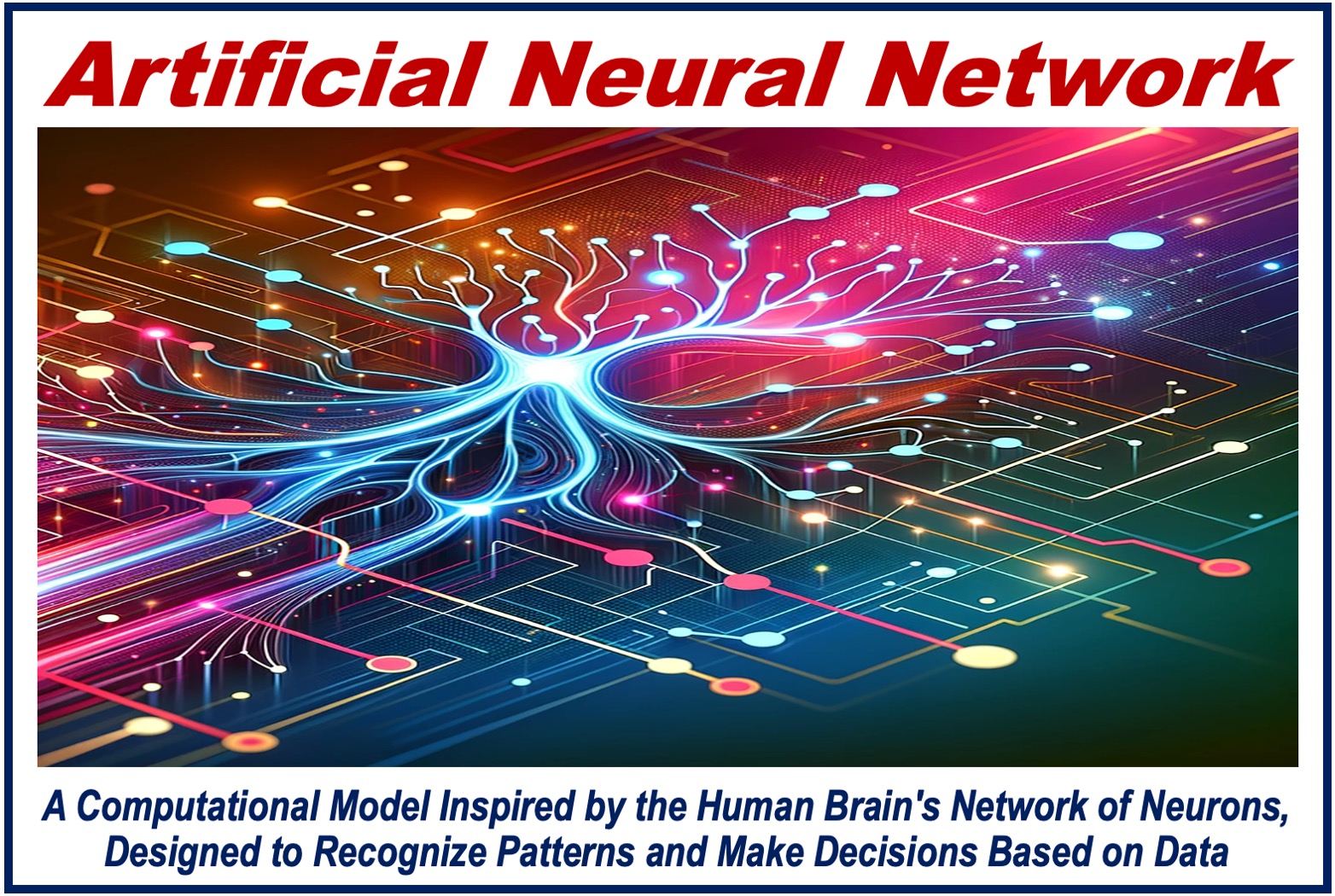An Artificial Neural Network is a computing system whose creators were inspired by biological neural networks, that is, the networks of humans’ and other animals’ brains. It is also known simply as a “neural network.”
Machine learning engineers design neural networks to recognize patterns in data. They consist of large numbers of interconnected neurons (processing elements), which work together to solve specific problems.
Artificial neural networks and the human brain
Neural networks are similar to the human brain in two main ways:
They can learn from data: Neural networks adjust their internal parameters to match the input with the correct output, improving their accuracy over time.
They learn “on the hop” in a self-directed way: As they process new data, they dynamically adapt without explicit reprogramming, becoming better at making predictions or decisions.
This learning process, which involves adjusting the synaptic weights of the network, is similar to how the neurons in our brains signal to each other.

Where are they used?
Today, we use neural networks in a wide range of applications where traditional algorithms struggle to perform. Examples include
- Medical diagnosis
- Financial forecasting
- Voice recognition
- Autonomous vehicles
- Fraud detection
- Language translation
- Sentiment analysis
- Personalized recommendations
They are especially useful for many types of classification and prediction tasks because they are good at handling huge amounts of information and finding complex, non-linear relationships within it.
Simple and complex artificial neural networks
The Feedforward Network is the simplest type of neural network. Here, the data moves from input to output – in one direction only. Examples of more complex types include:
- Recurrent Neural Networks (RNNS) – these have loops that allow information to be stored within the network, imitating memory.
- Convolutional Neural Networks (CNNs) – primarily used in image recognition and processing, these networks are designed to automatically and adaptively learn spatial hierarchies of features from input images.
- Long Short-Term Memory Networks (LSTMs) – a special kind of RNN capable of learning long-term dependencies, especially useful for sequence prediction problems.
- Generative Adversarial Networks (GANs) – composed of two neural networks, a generator and a discriminator, which are trained simultaneously to generate new, synthetic instances of data that can pass for real data.
- Deep Belief Networks (DBNs) – a stacked type of network made of multiple layers of graphical models, used for image recognition, video recognition, and motion-capture data.
- Autoencoders – used for learning efficient codings of input data, typically for the purpose of dimensionality reduction or feature learning.
Training
Typically, the following steps are used to train a neural network:
- The deep learning engineer provides the network with a set of inputs together with the corresponding correct outputs. This is known as “supervised learning.”
- The network makes a prediction or decision about the data it received.
- The error is calculated. Here, the term “error” refers to the different between the network’s prediction and the actual output.
- The network’s weights are adjusted to minimize this error using a process known as backpropagation.
The engineers repeat this process many times, thus improving the network’s predictions.
An artificial neural network’s efficiency depends on how its neurons are connected and the quality and quantity of data the engineers use to train it.
Final thoughts
Artificial neural networks have helped artificial intelligence evolve rapidly. Their ability to learn from data and make predictions or decisions is a cornerstone of machine learning today.
As computing power, algorithm design, and neural networks advance, they are becoming increasingly sophisticated and powerful tools for analyzing information, making decisions and predictions, and mimicking human-like abilities.
